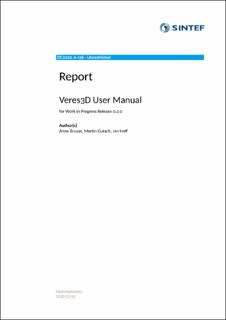| dc.description.abstract | When a ship is moving forward in waves it will experience an increase in resistance in waves. Traditionally, ship designs are optimized for calm water performance. However, this condition does not reflect the real condition the vessel will experience at sea. The International Maritime Organization (IMO) has established the Energy Efficiency Design Index (EEDI) as the most important policy measure to reduce greenhouse gas emissions from shipping. The current implementation of the EEDI is based on calm water conditions. Depending on the type and size, vessels are not allowed to exceed a threshold for emitted CO2. However, when vessels operate under real-sea conditions with effects of wind and waves, the emissions are higher than assumed for a given speed according to the calculations following the EEDI. This is due to the fact that the required power in real sea exceeds the power requirement in calm-water conditions. Hence, calm-water optimization, currently applied by the EEDI, does not necessarily produce the ship with the lowest energy consumption over its lifetime, leading to increased fuel consumption and raising a safety concern for the operation of the vessel in extreme weather conditions. To better address the IMO 2050 greenhouse gas reduction target, the practical numerical tool VERE3D for the prediction of seakeeping qualities of ships with forward speed has been developed. As a linear three-dimensional (3D) frequency-domain formulation, VERES3D is based on boundary element methods (BEM). The code shall be used for practical applications in the early ship design process and will be further developed and extended over the next years, considering ongoing validation activities and the feedback received from users within the industry and academia. | en_US |

